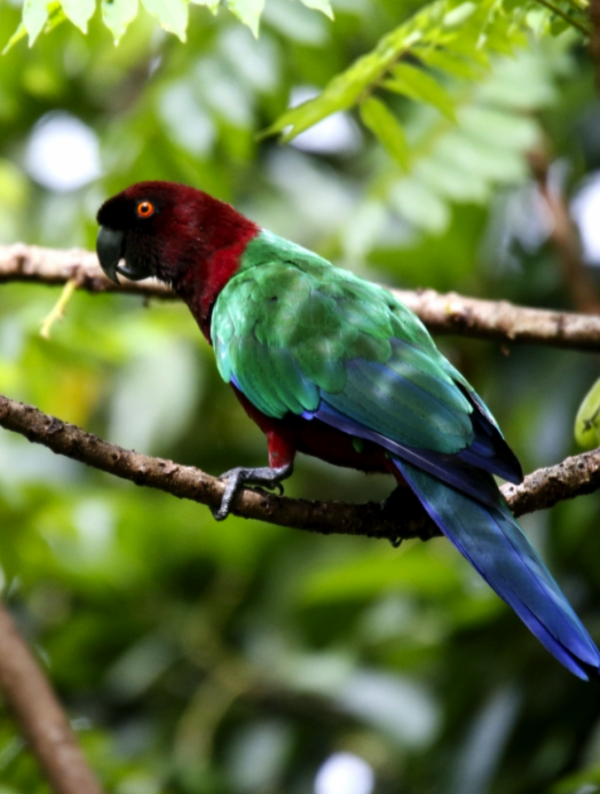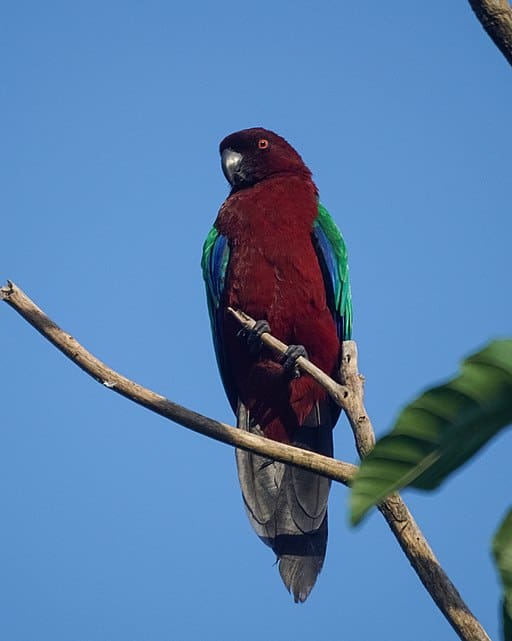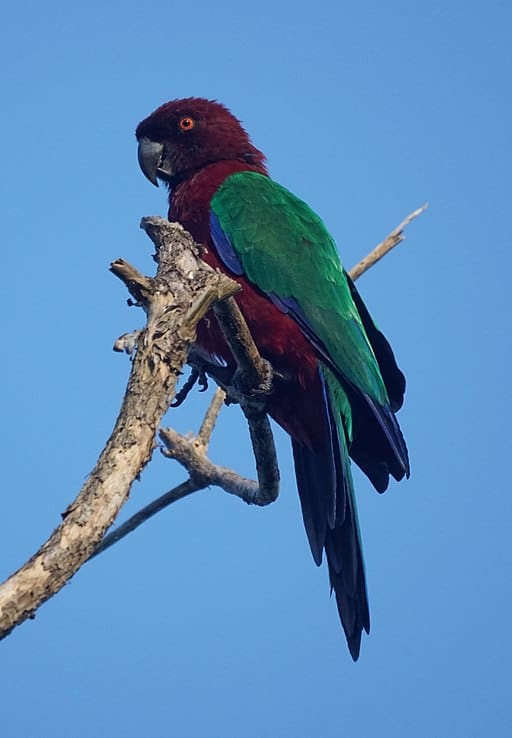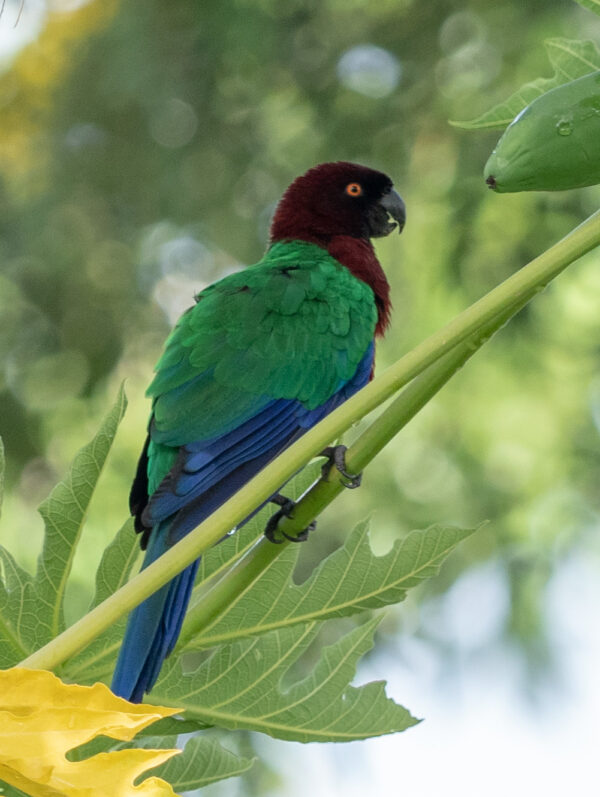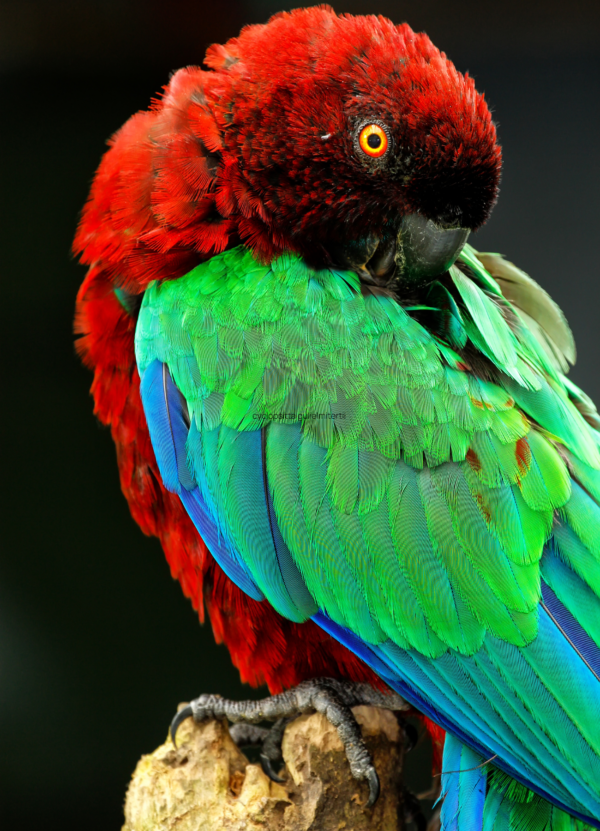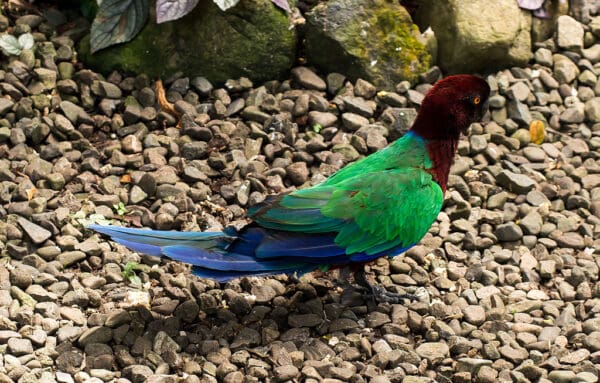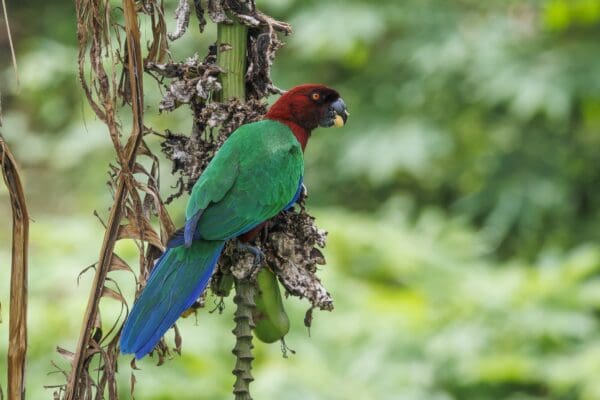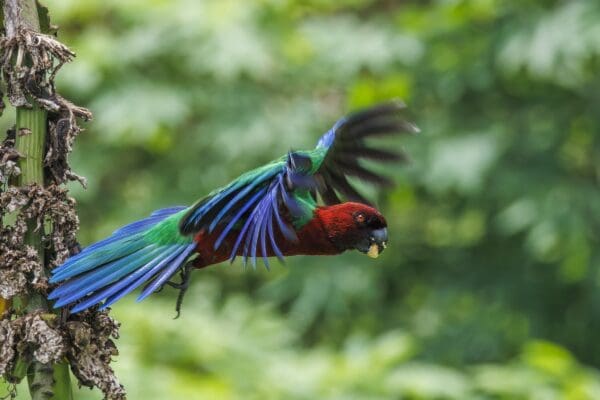Red Shining Parrot
Also known as:
Red-breasted Musk Parrot, Maroon Musk Parrot, Maroon Parrot
Also known as:
Red-breasted Musk Parrot, Maroon Musk Parrot, Maroon Parrot
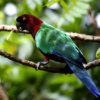
![© Mike's Birds [CC BY-SA 2.0] via Flickr](https://parrots.org/wp-content/uploads/2023/01/wpt_Red-Shining-Parrot_1204-4-100x100.jpg)
![© Mike's Birds [CC BY-SA 2.0] via Flickr](https://parrots.org/wp-content/uploads/2023/01/wpt_Red-Shining-Parrot_1204-3-100x100.jpg)
![© Aviceda (Own work) [CC BY-SA 3.0] via Wikimedia Commons](https://parrots.org/wp-content/uploads/2023/01/wpt_Red-Shining-Parrot_1204-100x100.jpg)
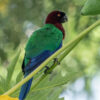
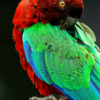

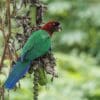
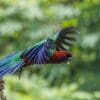
DID YOU KNOW?
The Red Shining Parrot chews into wood to extract insect larvae, a favourite food.

Prosopeia

tabuensis
Size:
45 cm (17.5 in)
Weight:
280 g (9.8 oz)
Subspecies including nominate:
two: P.t. tabuensis, P.t. taviuensis
Colour Adult:
P.t. tabuensis: Both adults have variable plumage; red/black face; rest of head brown/red, darker on hind cheeks; underparts dark maroon; dark blue collar across upper mantle, obvious in some birds but in others narrow and nearly absent; upperparts and tail green, feathers on rump in some individuals edged with maroon. Beak grey/black. Dark grey eye ring. Eye orange/yellow.
P.t. taviuensis: Both adults as in tabuensis but with no blue collar; no maroon edging to feathers on rump; face less black; smaller.
Colour Juvenile:
As in adults but with horn-coloured beak with grey streaking; pale eye ring and brown eye.
Call:
Described as loud and squawking, repeated in bursts. Also grating notes, and soft ra-ra-ra-ra when perched.
More Information:
Content Sources:
CITES
BirdLife International
Cornell Lab of Ornithology/Birds of the World
Parrots: A Guide to Parrots of the World, Juniper and Parr, 1998
Parrots of the World, Forshaw and Cooper, 1977. 2010 edition
Parrots of the World, Forshaw, 2006.
Lexicon of Parrots, Thomas Arndt.
Parrots in Aviculture, Low, 1992.
Captive Status:
Very rare.
Longevity:
—
Housing:
Walk-in enclosure, minimum length 4.5 m (14.7 ft).
Diet:
Fruit such as: apple, pear, orange, banana, cactus fruits, pomegranate, etc, forming about 30 percent of diet; vegetables such as: carrot, celery, green peas and beans, corn; green leaves such as: Swiss chard, lettuce, sowthistle, dandelion, chickweed; spray millet; small seed mix such as: canary, millet and smaller amounts of oats, buckwheat and safflower; soaked and sprouted sunflower seed; cooked beans and other pulses, and complete pellet.
Enrichment:
Enjoys bathing, so provide overhead misters or shallow water bowls; bird-safe fresh branches with flowers, also fir, willow and pine branches; chew toys. Enjoys flying, provide lots of space in aviary.
Nest Box Size:
12″ x 12″ x 40″ (30.5 cm x 30.5 cm x 101.6 cm) vertical box.
Clutch Size:
1 to 4
Fledging Age:
8 weeks
Hatch Weight:
—
Peak Weight:
—
Weaning Weight:
—
World Population:
Unknown but described as common, decreasing.
IUCN Red List Status:
Least Concern
CITES Listing:
Appendix II
Threat Summary:
Not globally threatened. A BirdLife “restricted-range” species. Fairly common in remaining forest on Tonga but habitat loss is rapid and a major decline in population is predicted there. Habitat loss caused its disappearance from Tongatapu. Apparently common on Tavieuni in 1973 and thriving on Ngau.
Range:
P.t. tabuensis: Vanua Levu, Kioa, Koro, and Gau, Fiji Islands; also introduced to Tonga Is.
P.t. taviuensis: Tavieuni, Qamea and Laucala, Fiji Islands.
Habitat:
Found in mature forest and other habitats including secondary growth forest, forested valleys (for breeding), coconut plantations, village gardens, farmland, mangroves and scrub. Up to 1250 m (4100 ft).
Wild Diet:
Diet includes plant foodstuffs of Myristica hypargyraea, Psidium guajava, Inocarpus fagiferus, Calophyllum neo-ebudicum, Rhus taitensis, Elattostachys falcata, Carica papaya, Malisia, Pleigynium timoriense, Melodinus vitiense and small wild bananas. Also apparently takes insect larvae from rotting wood.
Ecology and Behaviour:
Are found singly, in pairs or in flocks of up to 40 birds outside the breeding season.
Clutch and Egg Size:
1 to 4 rounded eggs, 38.5 x 30.0 mm (1.5 x 1.2 in).
Breeding Season:
May-October; nest is in hollow branch or tree cavity.
Related Links:
—
